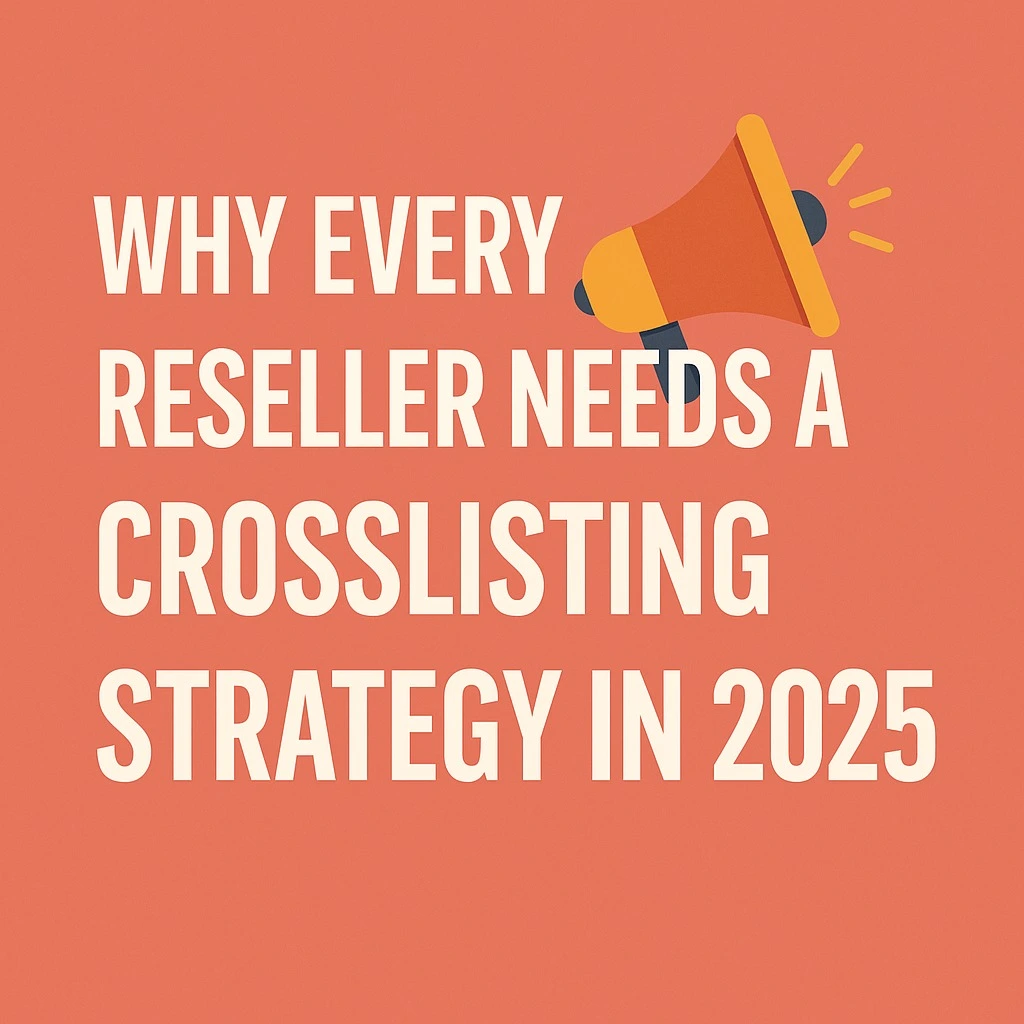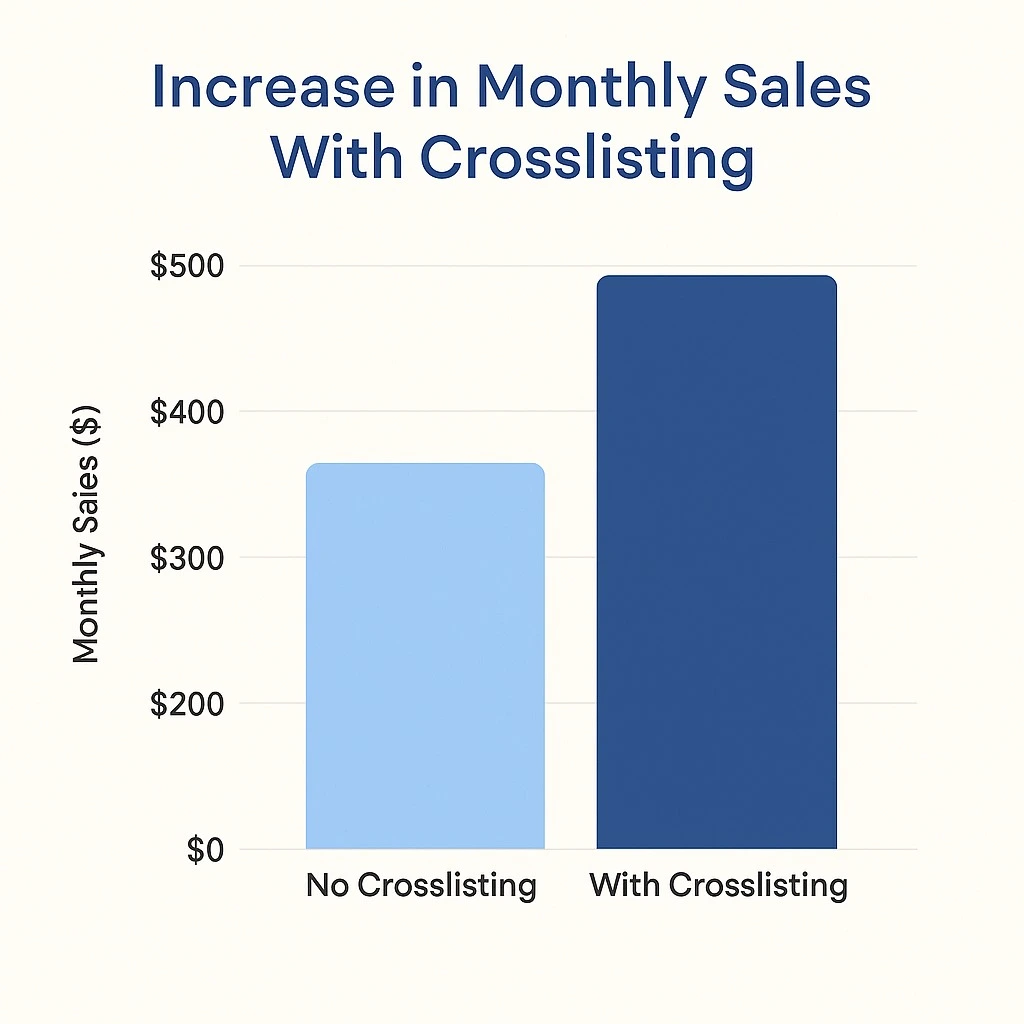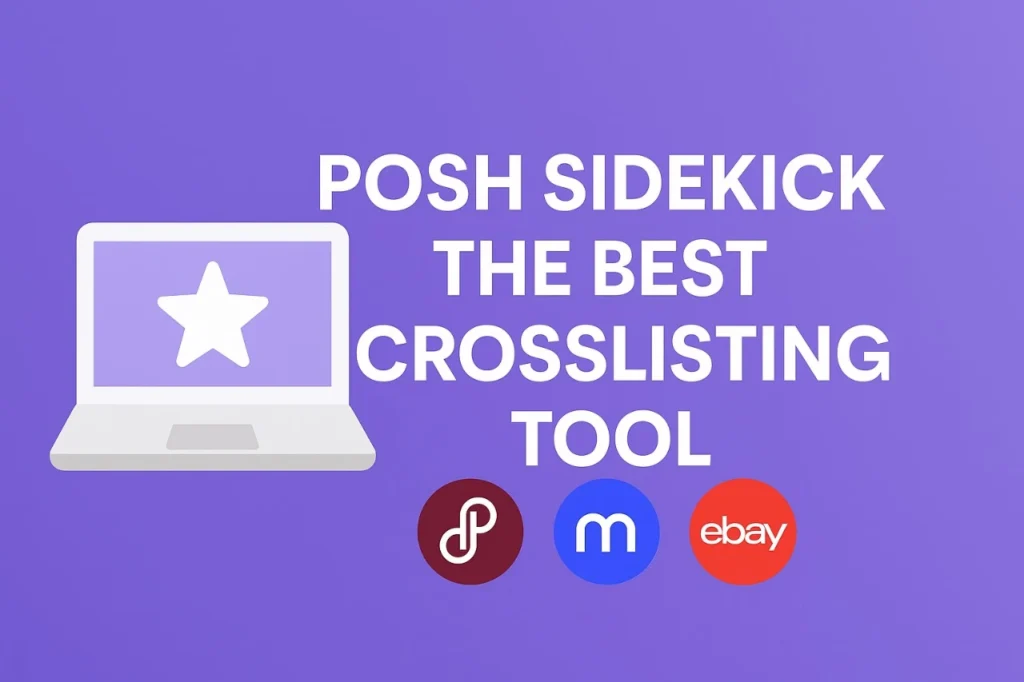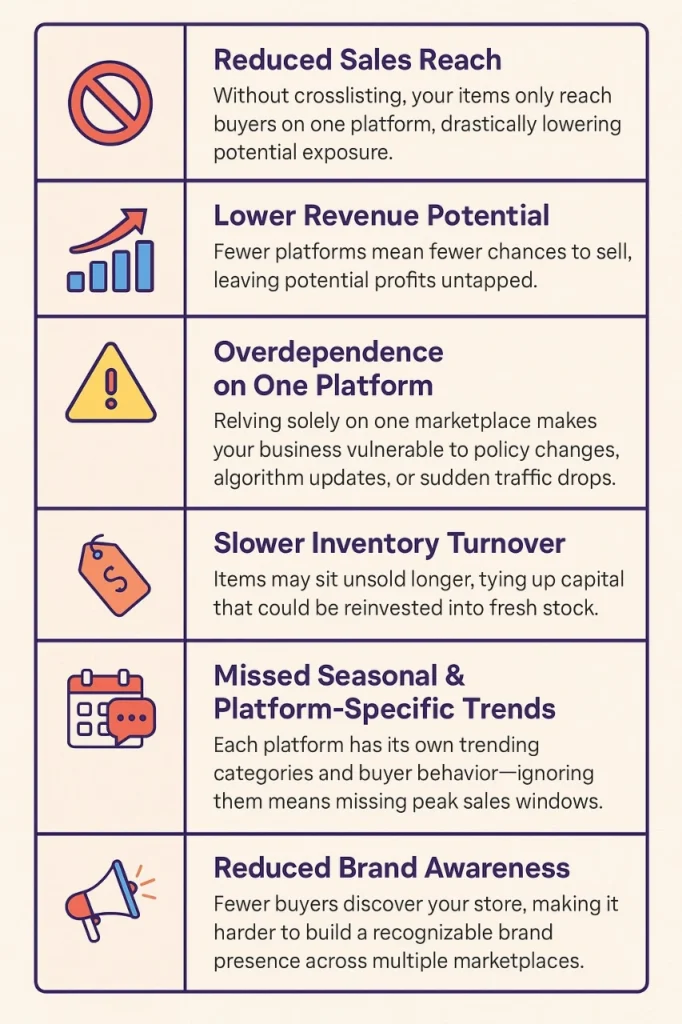The reselling market in 2025 is more competitive than ever. With marketplaces like Poshmark, Mercari, Depop, eBay, and Etsy all vying for buyers’ attention, sticking to just one platform limits your growth potential. Crosslisting: the practice of listing the same product on multiple marketplaces is no longer just “nice to have’, it’s a survival tool. For resellers, a strong crosslisting strategy means greater visibility, diversified income streams, and the ability to reach niche buyers who may never visit your main selling platform.

What Is Crosslisting?
Crosslisting is the process of taking a product listing, comprising photos, descriptions, and pricing, and posting it across multiple marketplaces. Instead of waiting for one audience to find your item, you place it in front of multiple audiences at once.
For example:
-
List your vintage leather jacket on Poshmark, eBay, and Depop.
-
Your high-quality images and keywords stay consistent, but you tap into the unique buyer pool of each platform.
Why 2025 Is the Year for Crosslisting
1. Platform Algorithms Change Constantly
Relying on one platform’s search algorithm is risky. Updates can bury your listings overnight. Crosslisting spreads your exposure across multiple sites, so one platform’s changes won’t sink your sales.
2. Buyers Are Shopping Across Platforms
In 2025, shoppers compare prices across marketplaces before making a purchase. If your item is only on one site, you’re missing buyers who prefer shopping elsewhere.
3. Inventory Moves Faster
Crosslisting maximizes visibility, which means items sell quicker. Instead of stale inventory, you keep your store fresh and cash flow steady.
4. Protection Against Market Fluctuations
Seasonal slumps or policy changes on one platform won’t cripple your business if you have active listings on others.

The Benefits of Crosslisting for Resellers
| Benefit | Why It Matters |
|---|---|
| Increased Sales Potential | More marketplaces = more buyers viewing your listings. |
| Diversified Income Streams | Reduces the risk of relying on one platform for all sales. |
| Better Inventory Management | You can target different audiences for different product types. |
| Brand Growth | Presence on multiple platforms builds brand recognition and credibility. |
| Faster Turnover | Higher visibility leads to quicker sales, freeing up capital for reinvestment. |
How to Implement a Crosslisting Strategy in 2025
1. Choose the Right Platforms
Not every marketplace is right for every product, and not every cross-listing strategy may work for all. As a reseller, you need to be very smart about the combination of platform and strategy.
-
Poshmark: Fashion, shoes, accessories.
-
eBay: Almost everything—especially collectibles and electronics.
-
Depop: Vintage, Y2K, and streetwear.
-
Mercari: Wide range of products, easy shipping.
-
Etsy: Handmade, vintage, and craft supplies.
2. Keep Listings Consistent
Your photos, descriptions, and pricing should align across platforms, but adjust for each site’s audience.
3. Use Crosslisting Tools
Manually posting to multiple platforms is time-consuming. Tools like Posh Sidekick automate crosslisting so you can list on Poshmark, eBay, Mercari, Depop, and more in minutes, without copy-paste fatigue.
4. Track Inventory Carefully
When an item sells on one platform, remove it from others to avoid overselling. Crosslisting tools can automatically sync and delist sold items.

Why Posh Sidekick Is the Crosslisting Game-Changer
Posh Sidekick is more than just a Poshmark automation tool, it’s a multi-platform powerhouse. In 2025, its crosslisting feature allows resellers to:
-
Instantly duplicate listings to multiple platforms.
-
Auto-remove sold items from all channels.
-
Save hours every week on manual listing work.
-
Maintain consistent branding and SEO across sites.
For busy resellers, this means more time sourcing profitable items and less time stuck in the backend. This makes it unarguably the best crosslisting tool in 2025.
What Resellers Lose Without a Crosslisting Strategy
If you’re not cross-listing, you’re leaving money on the table. Here’s what you risk:
-
Lower sales volume because your reach is limited.
-
Slower inventory turnover tying up your capital.
-
Overdependence on one platform makes you vulnerable to sudden changes.

Pro Tips for Crosslisting Strategy Success
-
Start with your top-performing listings before scaling up.
-
Adjust pricing for platform fees and buyer expectations.
-
Use platform-specific keywords for better search visibility.
-
Batch your crosslisting tasks for efficiency.
Conclusion
In 2025, crosslisting is not optional; it’s essential for any serious reseller. By spreading your listings across multiple marketplaces, you not only multiply your chances of making a sale but also safeguard your business against unpredictable market shifts. With tools like Posh Sidekick, implementing a winning crosslisting strategy has never been easier.
FAQ: Crosslisting in 2025
Q: Is crosslisting allowed on all platforms?
A: Yes, most marketplaces allow it as long as you remove sold listings promptly.
Q: How many platforms should I crosslist on?
A: Start with 2–3 that fit your niche and expand as your process becomes more efficient.
Q: Do I need separate pricing for each platform?
A: Yes, sometimes you need to adjust pricing for each site’s fee structure and audience expectations.








